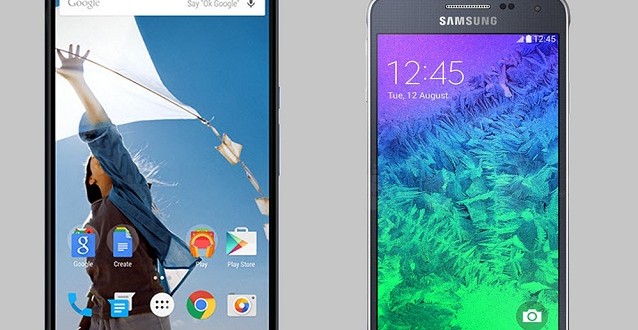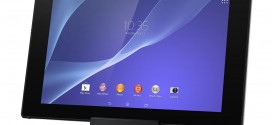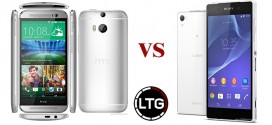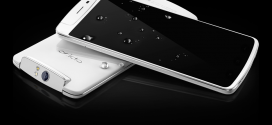Today we’ll be looking at the Motorola Nexus 6 and the Samsung Galaxy Alpha, two smartphones that are worlds apart in many ways. These devices are able to stand out from the crowd quite a bit and that’s because their manufacturers wanted to try something new when they created them. Whether they succeeded or not is for you to judge, but we’re going to give you a quick run-down for both of them in order to help you with that decision. Despite all their differences, the Nexus 6 and Samsung Galaxy Alpha do share a rather similar price and we’re going to try and figure out why that is. Without further ado, let’s kick things off, shall we?
Display and Design
The Samsung Galaxy Alpha is a rather unconventional phone due to its premium metallic design. This is of course a welcomed feature, but seems very strange coming from a company that in recent years didn’t take too many risks and treated us with increasingly dull looking plastic smartphones with the occasional faux leather back. By comparison, the Nexus 6 is almost identical to the Moto X (2014) from a visual standpoint but the size sure isn’t. This is a downright huge phone that comes with an impressive display of 6-inches with 1440 x 2560 resolution and 493 pixel density. Next to this giant handset the Samsung Galaxy Alpha looks almost small and dated with its 4.7-inch screen with 720 x 1280 pixel resolution and 312 ppi. This device will definitely not win any contests when it comes to screen quality, but it is one of the more thinnest and durable handsets around, and also one of the first to sport the new Corning Gorilla Glass 4 protection. As for the Nexus 6, it’s very hard to argue with its beautiful display and overall solid build complete with aluminum frame.
Hardware and Software
Here the differences are even bigger, with one device being able to go head-to-head with even the most powerful flagships around while the other falls a bit short in a fight with the big boys, although it can easily take on most minis. You likely know which is which by now but let’s take a quick look at the specs regardless. The Samsung Galaxy Alpha comes equipped with the tech giant’s in-house Exynos 5430 octa-core processor, Mali-T628 MP6 GPU, 2 GB of RAM, 32 GB of non-expandable storage, 12 MP primary camera, and 1860 mAh battery. Not a bad set of specs for a device this size but the fact that Samsung had to place a small battery in order to keep the device thin is very obvious and it’s a decision that will not be appreciated by everyone. The Nexus 6 unsurprisingly comes with a much larger 3220 mAh battery that’s powering the Qualcomm Snapdragon 805 quad-core processor clocked at 2.7 GHz. Other specs include an Adreno 420 GPU, 3 GB of RAM, 32 GB/64GB storage options, and 13 MP main camera. As for the software, the Motorola Nexus 6 was the first device to run on Android Lollipop and will likely also be among the first to receive any upcoming smaller OS updates. The Samsung Galaxy Alpha currently runs on Android 4.4 KitKat, but will upgrade to Android Lollipop as well in the near future.
Price and Final Thoughts
We can’t have a proper smartphone comparison without mentioning the price, right? This is important because a lot of the time it’s the deciding factor when considering if a certain device is worth a purchase. The Nexus 6 is a bit different than its bang for the buck predecessors as it’s not exactly an affordable flagship. However, at $650 it’s still not as expensive as most of its main competitors. The Samsung Galaxy Alpha on the other hand, is arguably more expensive than it should be. More often than not, you will find the smartphone with a $500-$600 price tag attached to it, which is quite a bit more than what you would normally pay for other similar handsets. Is the premium design worth that amount of money? Probably not. The Nexus 6 has a lot more going on for itself but at the same time, its size make it rather unpractical for most people. Bottom line is that both smartphones come with advantages and disadvantages, so make sure you choose the one that best suits your needs.
 Load the Game Video Games, Reviews, Game News, Game Reviews & Game Video Trailers
Load the Game Video Games, Reviews, Game News, Game Reviews & Game Video Trailers



